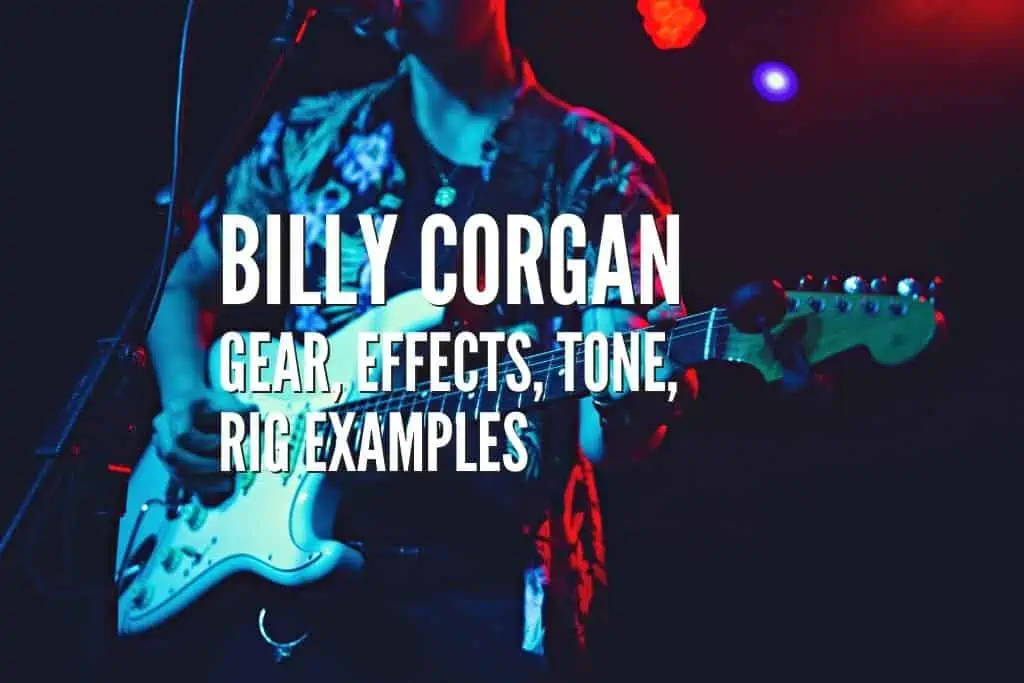The prolific guitarist of The Smashing Pumpkins, Billy Corgan, has been one of the top-tier musicians in the alternative rock scene since the early 90s. His unique playing style and fuzzy tones inspired many musicians worldwide.
With amazing albums such as “Siamese Dream” in 1993, “Mellon Collie and the Infinite Sadness” in 1995, and “Zeitgeist” in 2006, The Smashing Pumpkins rocked the world with the leadership of the guitarist and primary composer Billy Corgan. The band combined elements from heavy metal, psychedelic rock, progressive rock, gothic rock, as well as shoegazing and electronica to create their unique sound, which features a densely layered, sublime guitar-heavy emphasis.
So, today we are going to take a look at this guitar hero’s gear and equipment while learning how to replicate his tone and playing style. Corgan’s sublime layered fuzz tones, along with his smart solutions in the studio, are all worth examining for every guitarist to widen their musical perspective.
Billy Corgan’s Signature Guitars
Reverend Billy Corgan Signature Electric Guitar
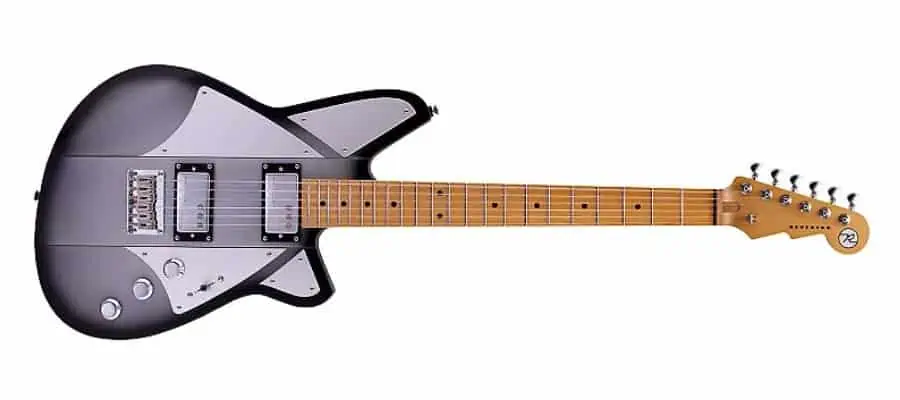

In 2015, Billy Corgan and Fender had a disagreement as Corgan said that Fender disrespected him. So he decided to collaborate with other brands, which turned out to be Reverend. His custom signature guitar was a blend between a big Fender Jaguar and a Rickenbacker.
The guitar features a Korina body, a hybrid nature, the new Pure Tone Jack socket, 21 and half-inch scale, a roasted maple neck and fretboard, and a full-on aluminum pickguard with the Billy Corgan signature Railhammer pickups. These pickups are amazing as they provide P90-style tones with the muscular build of a humbucker.
This guitar is the most-associated guitar with Billy Corgan as he uses it regularly on every show, video, and recording session. You can see the guitar in any The Smashing Pumpkins video shot after 2015.
Fender Billy Corgan Stratocaster Electric Guitar
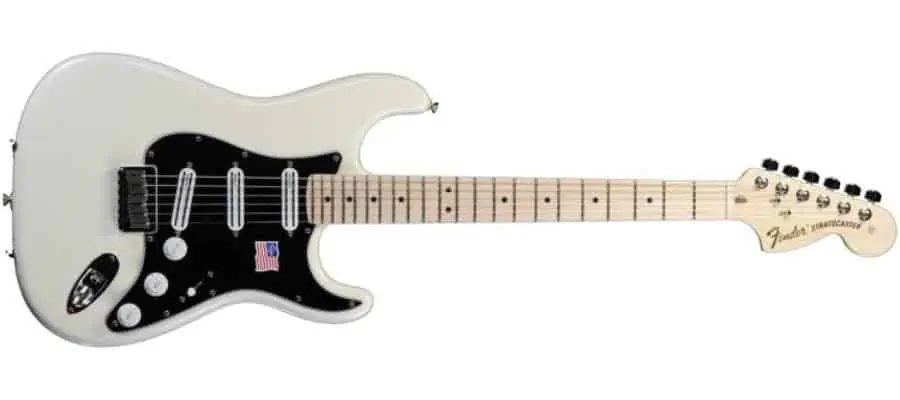

Billy Corgan collaborated with Fender in 2008 in order to create Billy Corgan Signature Stratocaster. Corgan was already playing a Stratocaster which he customized himself. In the signature model, he wanted a maple fretboard, custom DiMarzio pickups with a special design for Corgan’s personal tone, and a new ‘57 style neck.
The guitar is quite comfortable and versatile, especially if you want to mix different elements from various genres into your tone. Corgan used the guitar from 2008 to 2015 on most of the live performances as well as in recordings. He still uses it occasionally.
Billy Corgan’s Electric Guitars
1957 Fender “Bat Strat” Stratocaster
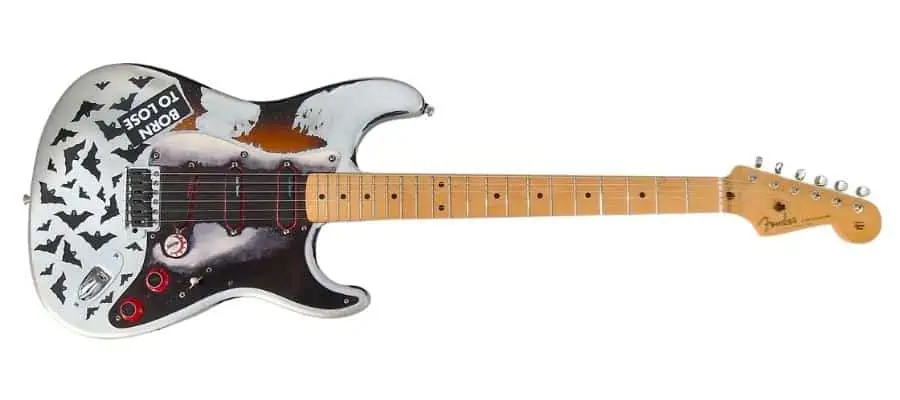

Billy Corgan’s number one guitar in the Gish and Siamese Dream days and the multi-year Mellon Collie and the Infinite Sadness world tour was his 1957 Fender “Bat Strat” Stratocaster. This was the most-used and favorite guitar of Corgan’s for many years, and it is still one of them. In an interview, he even said that if there was one guitar he would want to be buried with, it is the 1957 Fender “Bat Strat” Stratocaster.
The guitar is not a normal Stratocaster. It comes with three Lace Sensor pickups: Lace Sensor Blue in the neck position, Lace Sensor Silver in the middle position, and Lace Sensor Red at the bridge position. Also, it has a 50s reissue alder body and a maple neck with a softer rounded 1950s profile.
1988 Fender Stratocaster
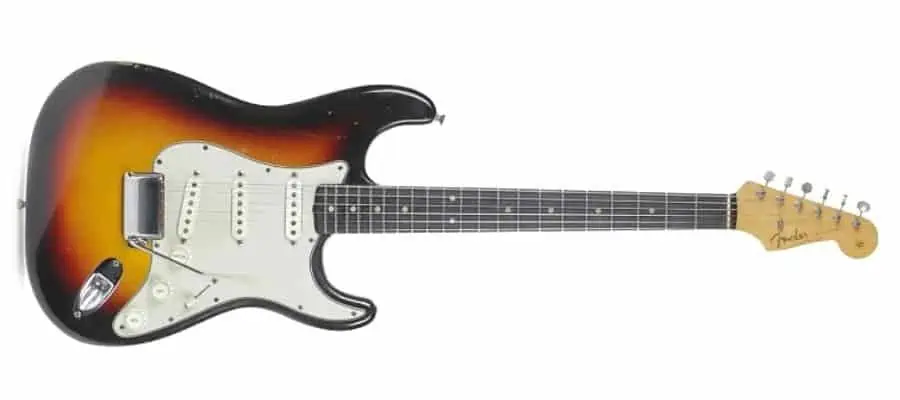

As Billy Corgan is a big Strat fan, his number 2 guitar was the 1988 Fender Stratocaster, which he regularly used during the Siamese Dream and Melon Collie and the Infinite Sadness era. The guitar was customized with black-over-candy-apple-red paint. The solo of Cherub Rock and the intro of the tune Today were recorded with the instrument.
The guitar was often tuned to the Eb tuning and was regularly used in live performances whenever Corgan needed the tuning. It had powerful DiMarzio pickups and was very similar to the Bat Strat in the rest of the specs.
Fender Vintage Series ’74 Stratocaster
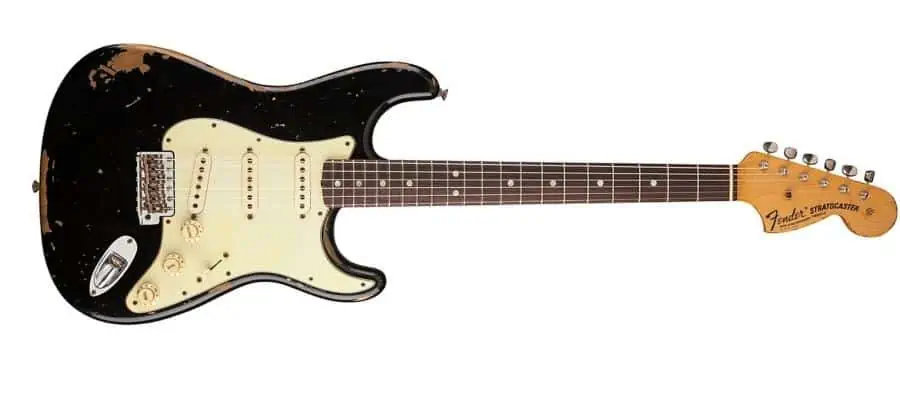
Another Strat in Corgan’s collection is the Fender Vintage Series ’74 Stratocaster. He used this one mainly during the ’90s. It was a heavily modified guitar and had lots of different stickers on it. It had a unique black-on-black finish and featured a three-bolt neck of the 70’s Strats and a maple fretboard.
The guitar was mainly used in the early days of The Smashing Pumpkins. It played a big role in Corgan’s career as it redefined his playing style. He said that the neck of this guitar felt like a violin which he truly liked as Corgan is a guitarist who plays like he is left-handed, although he is right-handed. Corgan called this guitar the Gish Guitar.
It had a solid alder body, oversized CBS-era headstock, and single-piece medium profile neck, which were the standard specs of the time.
Fender Mustang
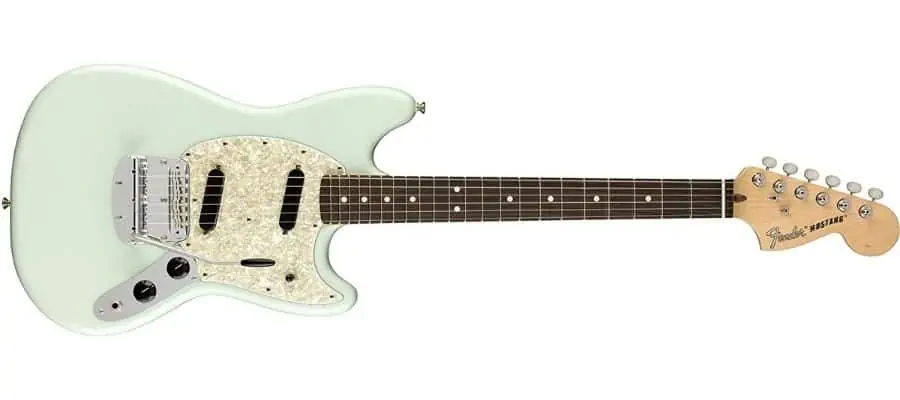

Another guitar Billy Corgan used in the early days of The Smashing Pumpkins was a red Fender Mustang. The guitar was famous for its bright sound with enough punch. But, later, he switched to Fender Stratocasters.
Gibson ES-335 Block Inlay Electric Guitar
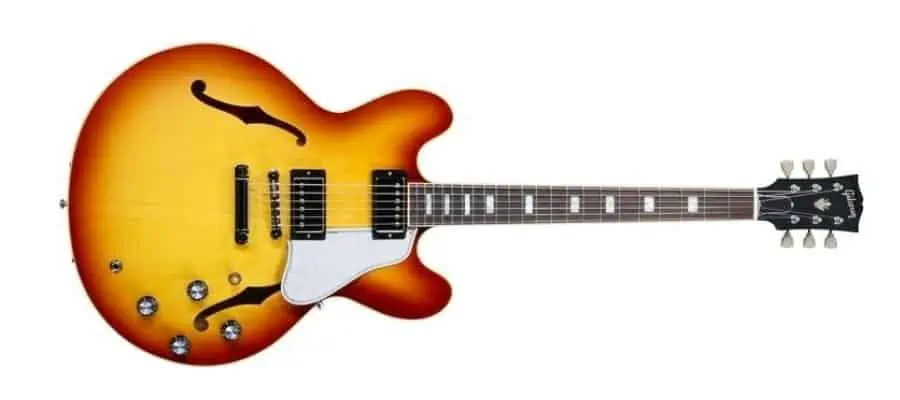

During the recording and touring for Mellon Collie and the Infinite Sadness, Billy Corgan used a Gibson ES-335 Block Inlay electric guitar. Corgan preferred this guitar to have a more aggressive sound than before, with warmer tones to accompany a newer impromptu. This was the time that the band shifted its sound from Alice In Chains to Nirvana.
The guitar is quite traditional and standard with its trapeze tailpiece and a dual humbucker setup. Later he added a tune-o-Matic bridge to the guitar. He still uses this one in his newer recordings.
Gibson Les Paul Special
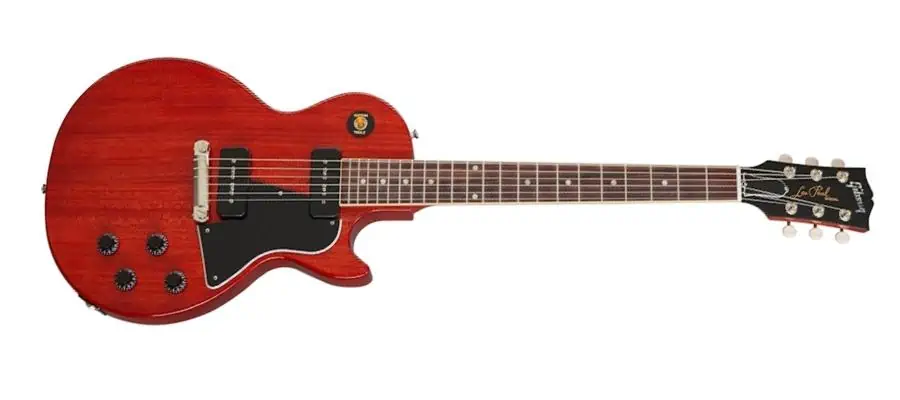
During the Machine era, Billy Corgan changed his choice of guitar to Les Pauls, leaving Strats. He played many different Les Pauls, including the Tobacco Sunburst Les Paul special, which was his primary choice of weapon. He sold the guitar later on Reverb.
Ibanez Talman Electric Guitar
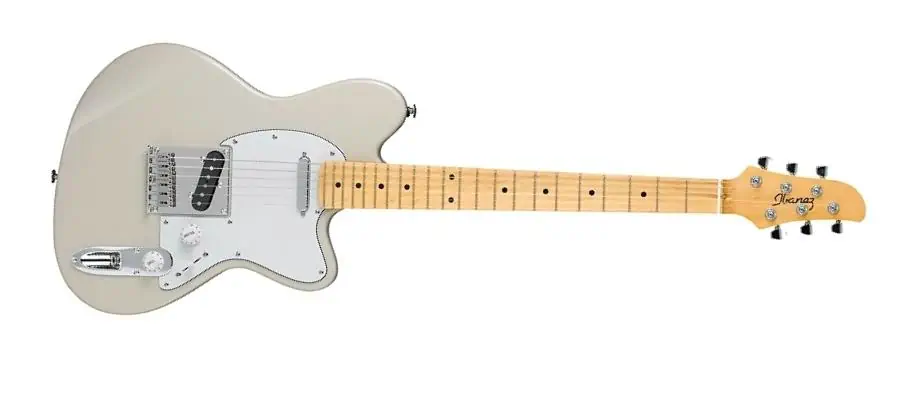

Billy Corgan was using an Ibanez Talman Electric Guitar during the Mellon Collie tour. This was one of the two guitars specially made for him by Ibanez. He also used this guitar for the soundtrack of the movie Ransom.
The guitar features a Strat-like configuration of three Lace Sensor pickups and a unique tone knob that functions like a notch filter in order to provide uniquely sculpted EQ maps.
Rickenbacker 360 Electric Guitar
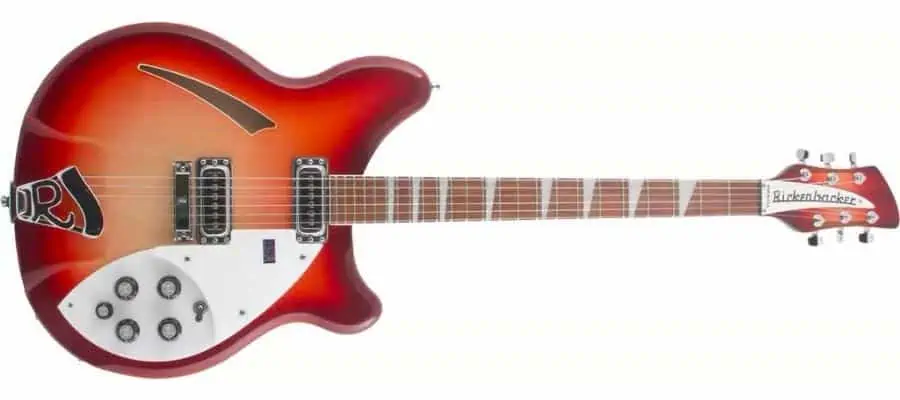
For a few recordings in the mid-2000s, Billy Corgan used a Rickenbacker 360 electric guitar. The guitar was famous for its low noise, very clear, and open pickups. Billy later sold the guitar on Reverb.
Rickenbacker 450
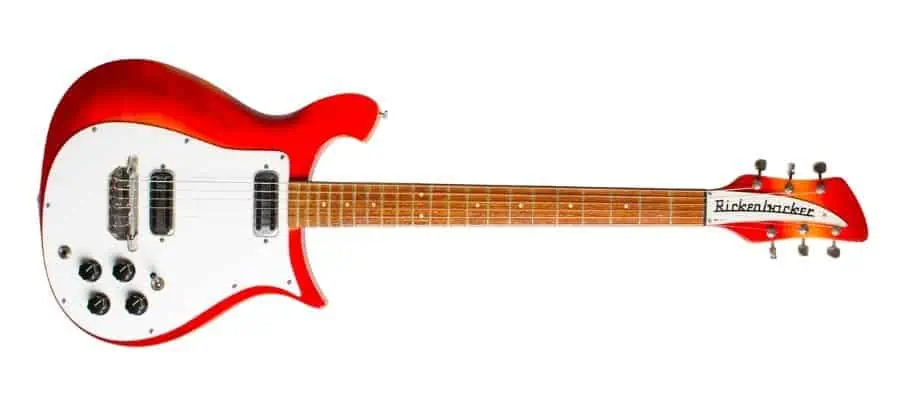
The Rickenbacker model 450 was another rarely used guitar of Billy Corgan, just like the 360 models. He used it in a few shows and recordings in the mid-2000s. Corgan sold the guitar in his shop in Reverb.
Gibson Flying V Electric Guitar
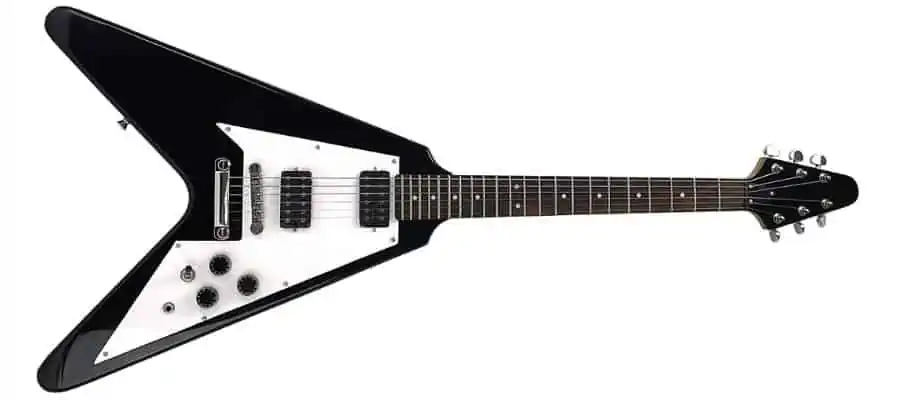

Billy Corgan used a Gibson Flying V electric guitar for the music video of Honesty by his other band Zwan. The guitar was most probably used for its aesthetic features rather than its sound.
Fender Eric Clapton Stratocaster
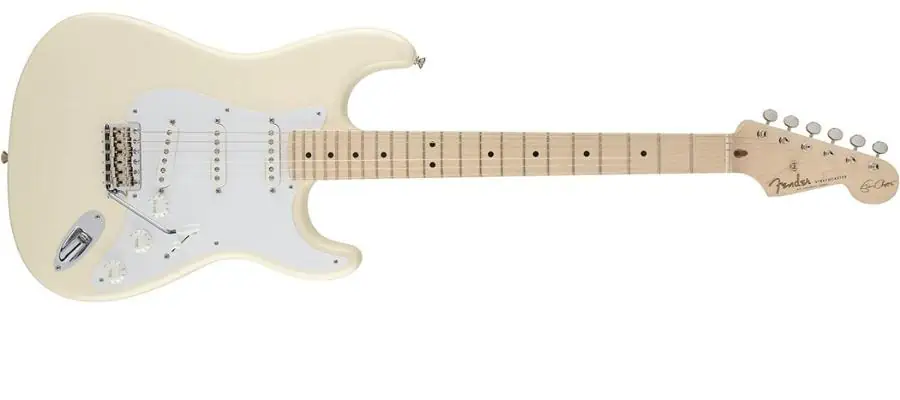
During the Siamese Dream era, Billy Corgan regularly used a Fender Eric Clapton Strat for the tours, according to an interview. The guitar was a standard high-quality Stratocaster loaded with lace sensor pickups.
Gibson Firebird Cardinal Red
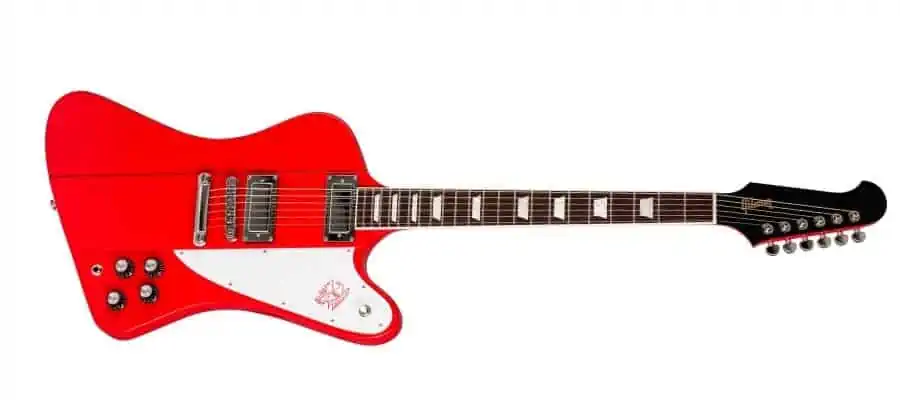

During the Adore years, another guitar in Corgan’s arsenal was a Gibson Firebird Cardinal Red. Later he occasionally used it on the stage.
Billy Corgan’s Acoustic Guitars
Yamaha LJ16BC Billy Corgan Signature Acoustic Guitar
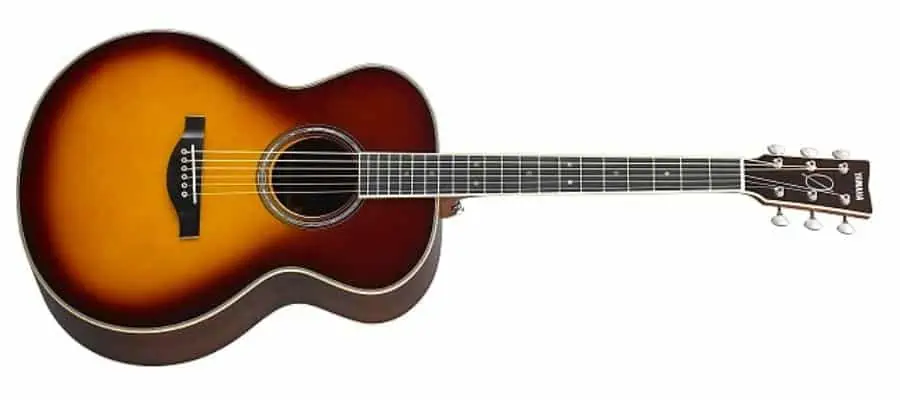

Yamaha and Billy Corgan collaborated on the creation of the Yamaha LJ16BC Billy Corgan Signature Acoustic Guitar. A solid Engelmann spruce top, rosewood back and sides, an SRT Piezo pickup passive system, and a 5-ply neck. The guitar performs great in the live shows as well as in the studio with its strong tones.
Gibson Dove Acoustic Guitar
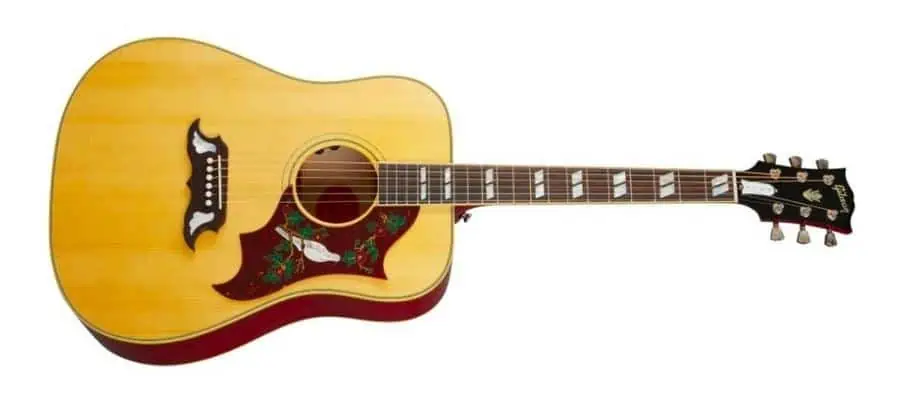

The main acoustic guitar choice of Billy Corgan is the Gibson Dove Acoustic Guitar. He used the guitar starting from the early days of the prominence of The Smashing Pumpkins. First, he played the guitar to create a more simplistic sound before experimenting with some other pedals. The guitar is Corgan’s main writing guitar.
Taylor DN8
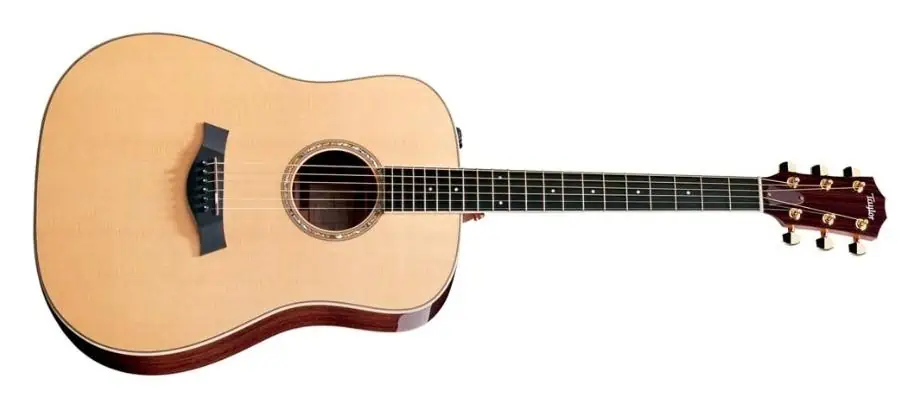
Billy Corgan’s main acoustic guitar for the recording sessions, especially on the Zeitgeist album, was his Taylor DN8. The guitar also became his main live acoustic guitar later.
The guitar has many stickers on it, just like Corgan’s other guitars. The classic dreadnought shape with a spruce top, rosewood sides, and back gives the guitar a nice look and an open sound with great balance. The guitar is sold in Billy’s shop in Reverb.
Ovation 1771LX Standard Balladeer
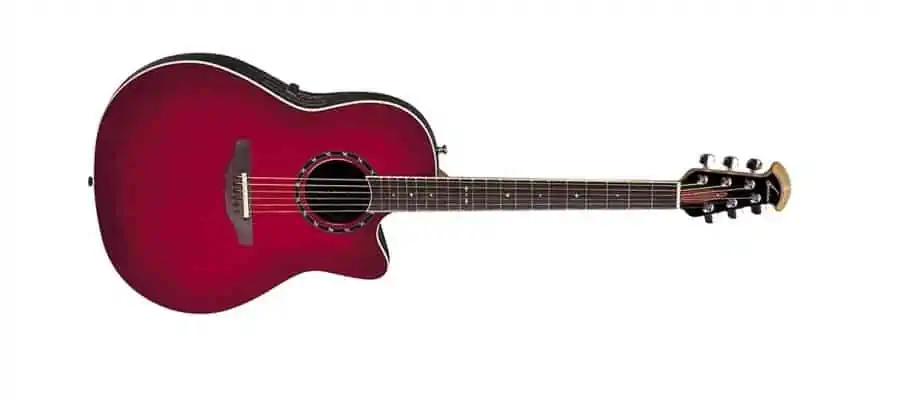

Another acoustic guitar Corgan occasionally used on the stage, especially for ballads, was the Ovation 1771LX Standard Balladeer. With its solid spruce top and an X pattern for a fuller, more wide open sound, as well as a rosewood fingerboard for lightweight and comfortable playability, it is a great acoustic guitar.
Regal Dobro
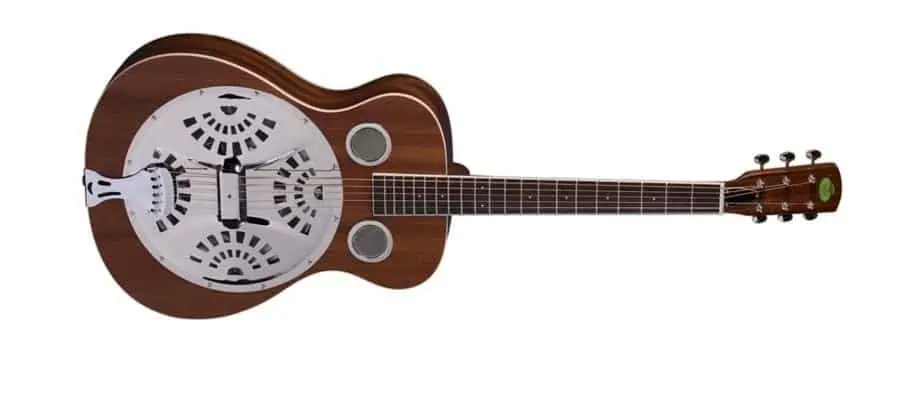
Regal Dobro was Corgan’s choice for some acoustic The Smashing Pumpkins shows. It was used only a couple of times and was sold in Reverb eventually.
Billy Corgan’s Pickups
Railhammer Billy Corgan Humcutter Guitar Pickups
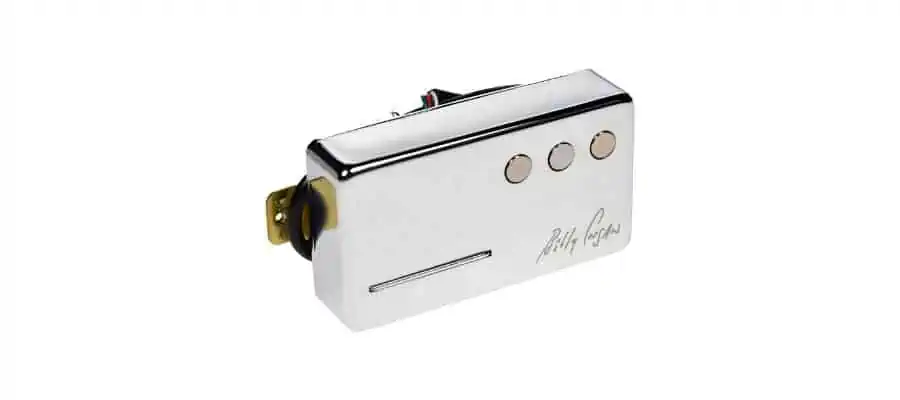
Railhammer Billy Corgan Humcutter Guitar Pickups were developed with Billy Corgan for his signature Reverend guitar. The pickups provide the sound of P90 with a more beefed-up and thick sound of humbuckers.
DiMarzio DP226 BC2 Billy Corgan Bridge Pickup
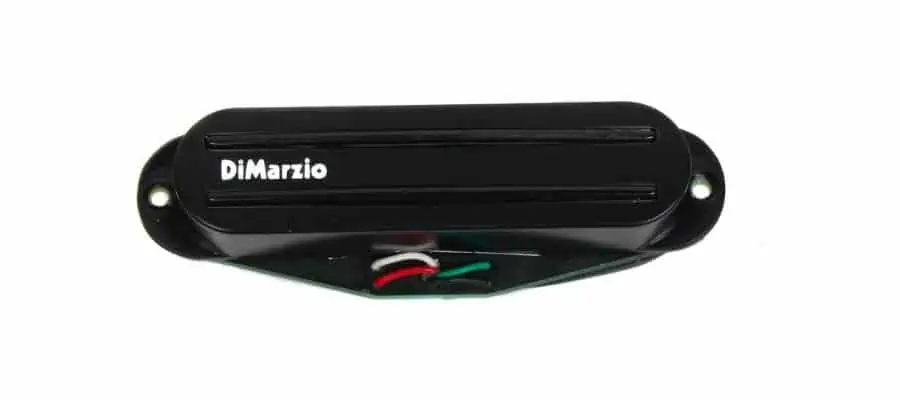
DiMarzio DP226 BC2 Billy Corgan Bridge Pickup was designed by DiMarzio for Billy Corgan after Corgan tried the Tone Zone pickup in several concerts. He wanted more low-string punch and deepness without it getting muddy in high-gain amps. So DiMarzio did it. These pickups are still on Corgan’s signature Strat.
DiMarzio DP225 BC1 Billy Corgan Neck Pickup
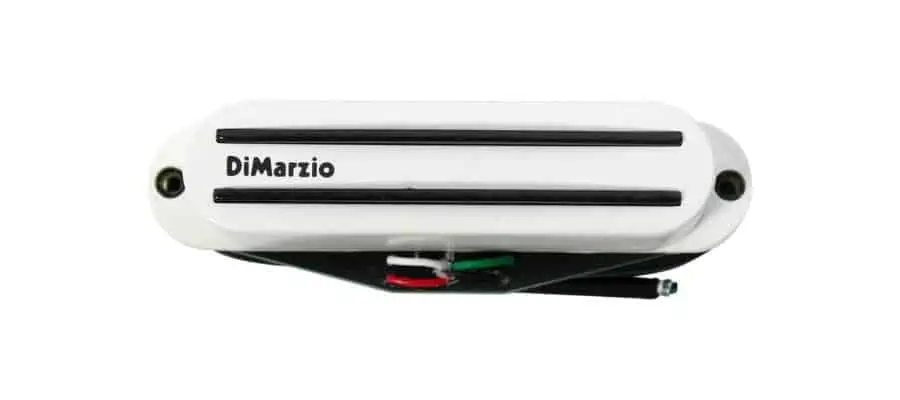
DiMarzio DP225 BC1 Billy Corgan Neck Pickup is the other half of the Billy Corgan Signature Strat. DiMarzio developed it after Corgan tried the Air Norton S model on the neck position. To provide the deep and punchy sound of low strings, DiMarzio designed this pickup for Corgan’s Strat.
Billy Corgan’s Guitar Strings
DR Hi-Beam Nickel-Plated Strings -.009’s-.042’s
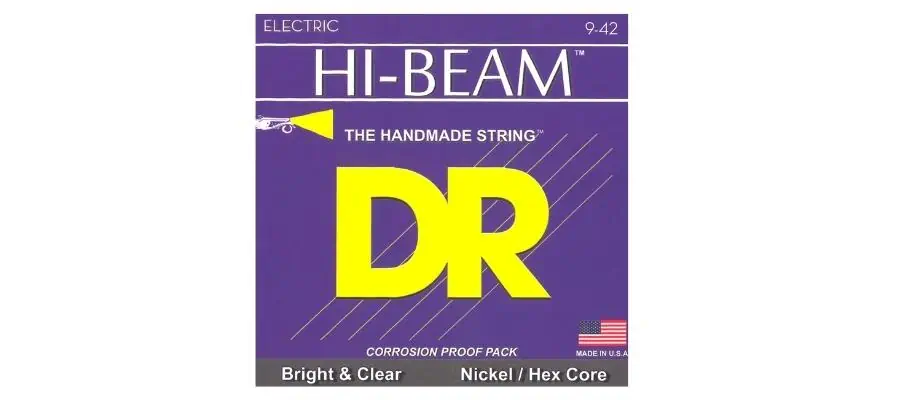
Since the beginning of his career, Corgan’s choice of guitar strings was DR Hi-Beam Nickel-Plated Strings -.009’s-.042’s as he wanted easier bends and vibratos as possible.
Billy Corgan’s Amps
Marshall “Soul” JCM800
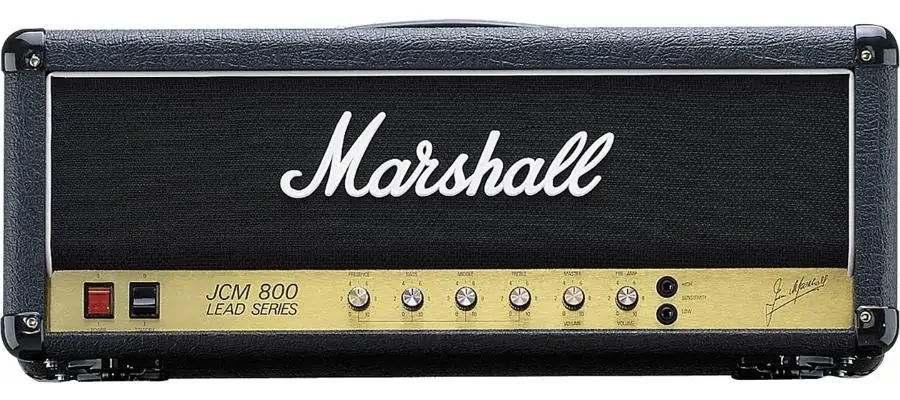
For the Pumpkins’ first three albums, Gish, Siamese Dream, and Mellon Collie and the Infinite Sadness, Billy Corgan used Marshall’s “Soul” JCM800 amp in the studio and on the stage. He changed the stock 6550 tubes with more vintage-voiced KT88s, which revived the amp, in his opinion.
Marshall JMP-1 Rack Preamp
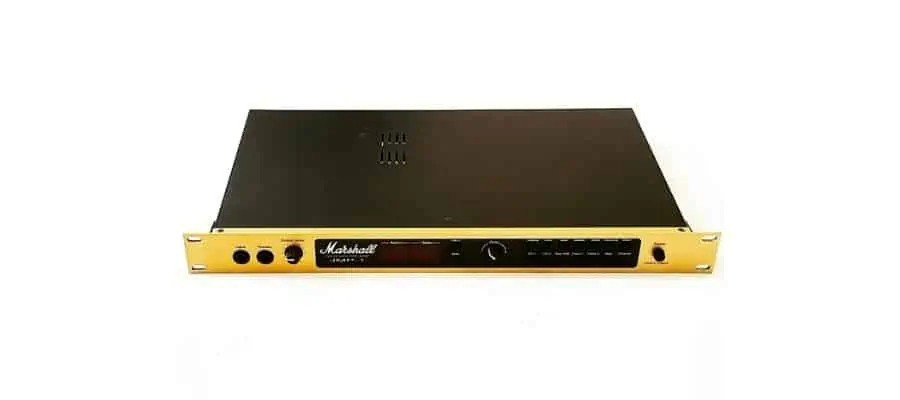
For a while, Billy experimented with a Marshall JPM-1 preamp plugged into an Alesis compressor with a Mesa Boogie head.
Vox AC30
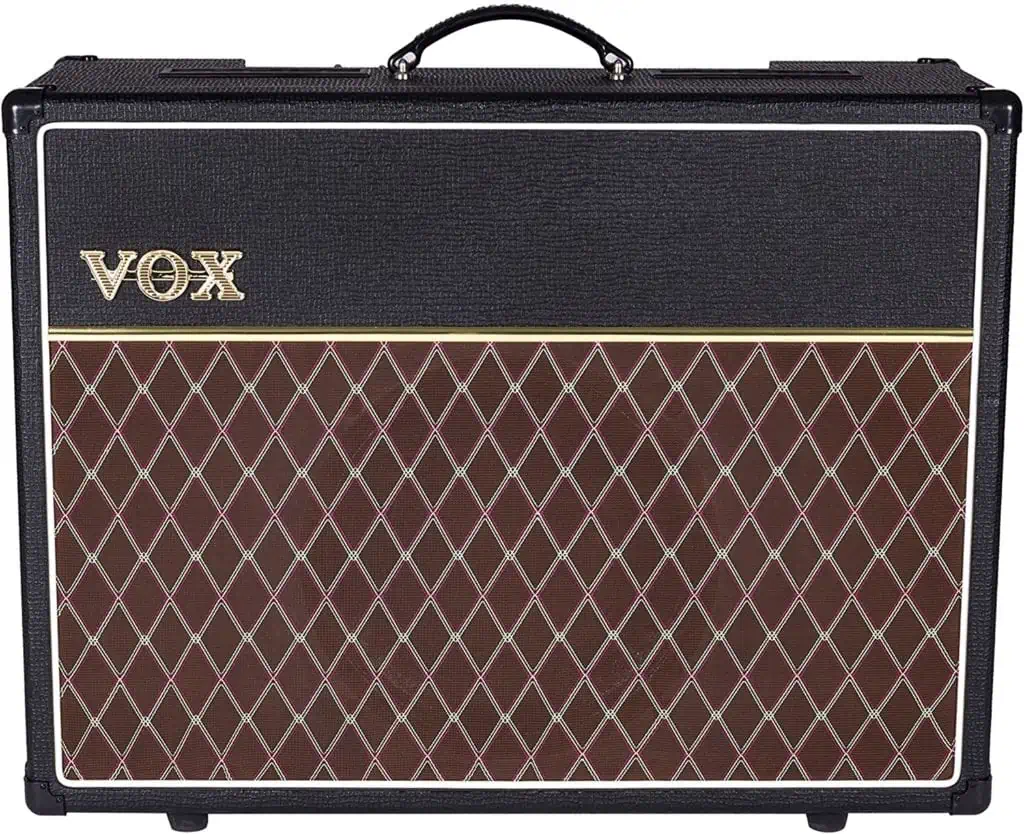
Another amp Corgan used in the studio for later albums was the classic Vox AC30. The amp is famous for its classic sound used by many bands, from the Beatles to Rolling Stones.
Orange OR-80 Amp Head
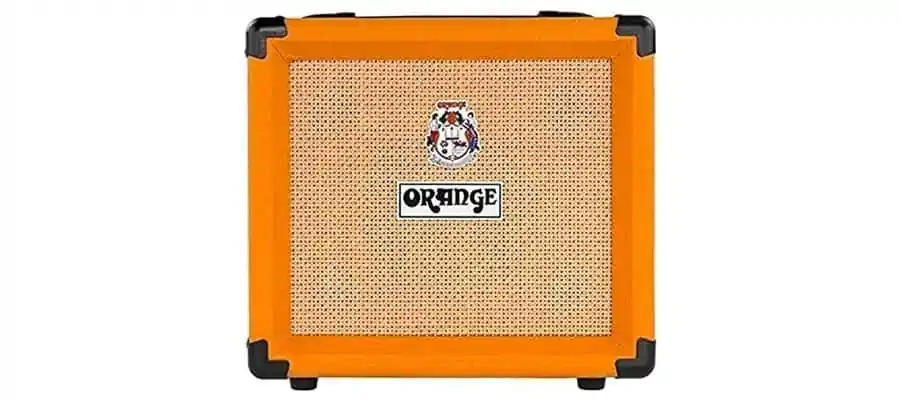
Billy Corgan preferred an Orange OR-80 Amp Head to create his wall of sound in many concerts after the 2000s.
Marshall MK II 100-watt head
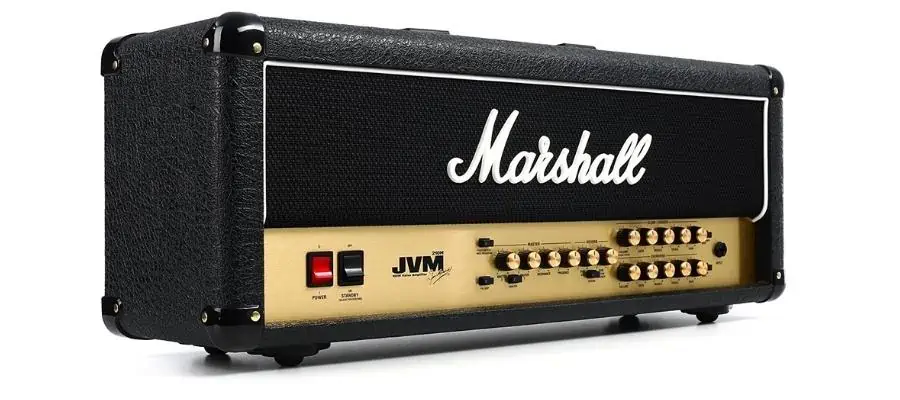
Another combination Billy Corgan liked and regularly used on the stage was the Marshall JPM-1 preamp into an Alesis compressor with a Mesa Boogie head combination.
Salvation Mods Preamps
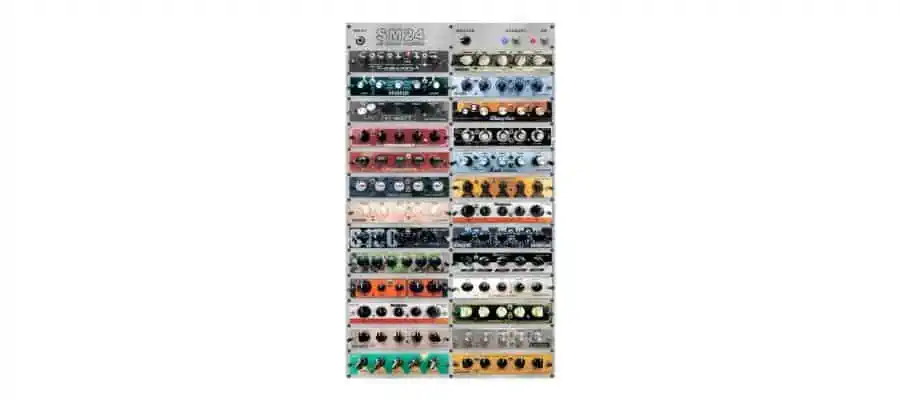
Billy Corgan is known for his affection for preamps and effects. He was always using more than 5 preamps on the stage. His main choice was Salvation Mods Preamps, including the models’ Soul” Marshall 2203, Reeves Custom Jimmy, Marshall Super Lead 1959RR Limited Edition Randy Rhoads, VamPower amp, Diezel VH4, and ’69 Marshall Super Tremolo.
Mesa/Boogie Strategy Power Amp
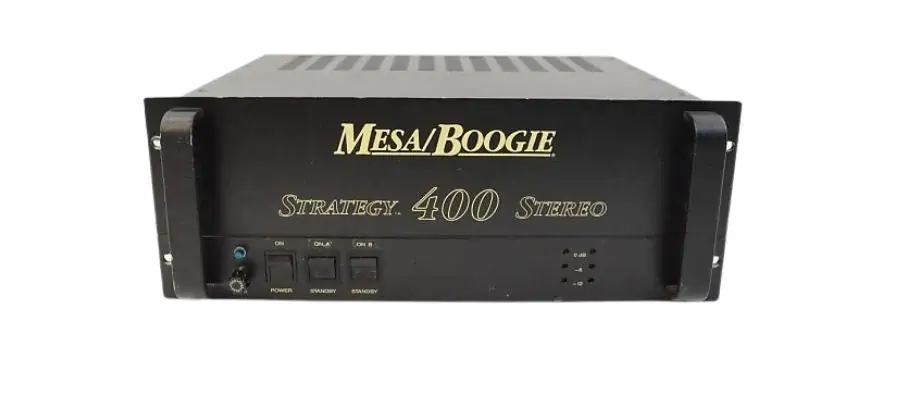
In the Mellon Collie and the Infinite Sadness era, Cogan deployed the Mesa/Boogie Strategy Power Amp. He uses it at half power and gets a powerful sound. As with most mesa-boogie amps, this one also is a unique take on classic tones but with a variety of power-tube distortion levels.
Fender Twin Reverb
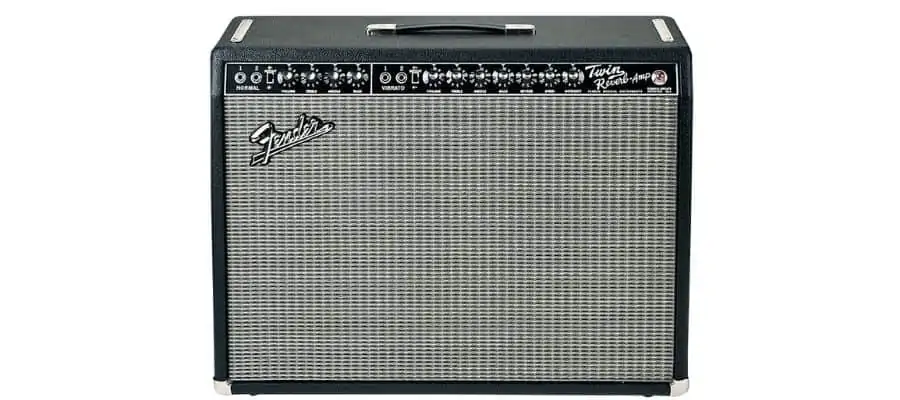
For the clean parts, Billy Corgan likes to get his sound with the help of the classic Fender Twin Reverb.
Billy Corgan’s Cabinets
Marshall 1960A/B 4 X 12 Cabinets
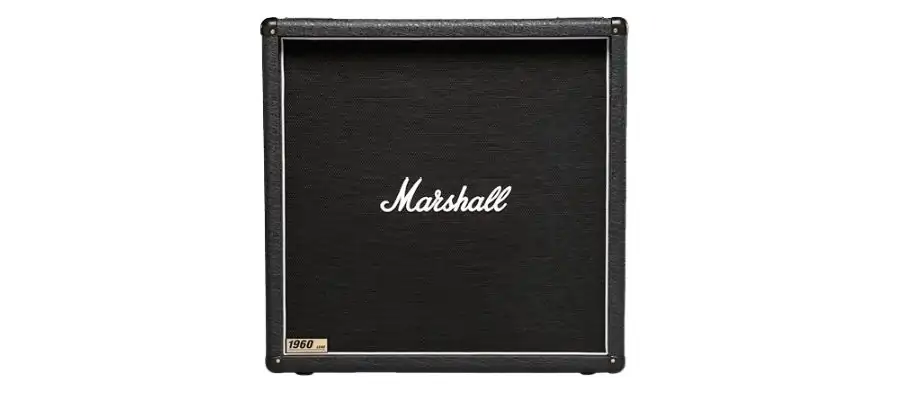
While Corgan uses different cabs occasionally, his main cab choice has always been the Marshall 1960A/B 4 X 12 cabinets, like most rock heroes.
Billy Corgan’s Pedals
Electro-Harmonix “Op-Amp” Big Muff Pi V4
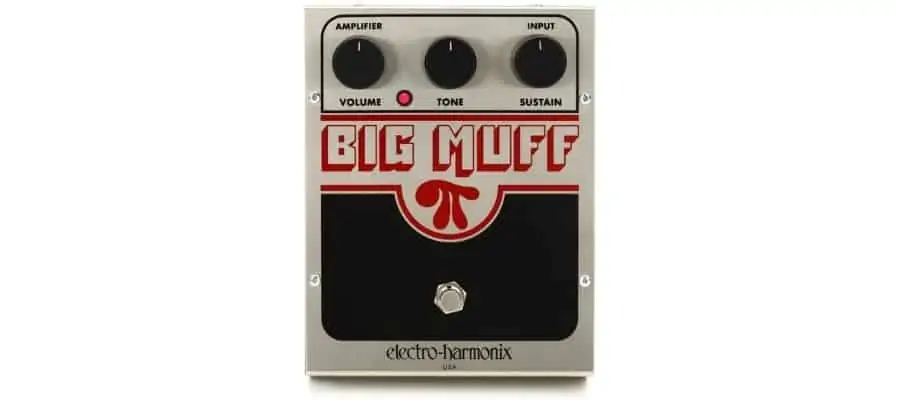
The first pedal that comes to mind about Billy Corgan and The Smashing Pumpkins is the Electro-Harmonix “Op-Amp” Big Muff Pi V4. The pedal provides a broad, thick fuzz sound that can be heard on most Pumpkins albums.
MXR Classic Phase 90
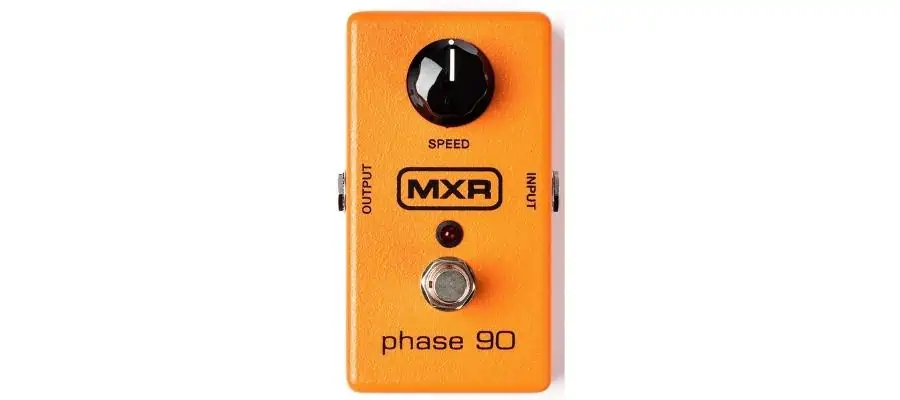
Phasers and flangers are some of the favorite effects of Corgan. For instance, for the solo of Oceania, he used an MXR Classic Phase 90 to get his tone.
Electro-Harmonix Electric Mistress
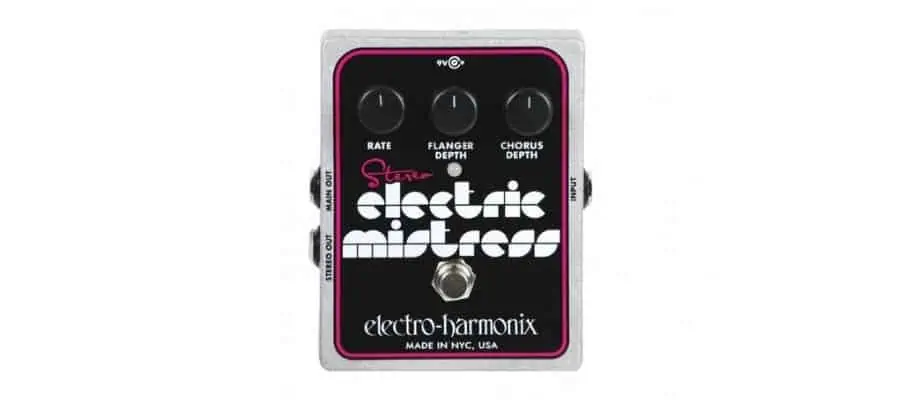
For the Gish/Siamese Dream era, Corgan preferred an Electro-Harmonix Electric Mistress to get his flanger and chorus layers.
Mu-Tron Bi-Phase
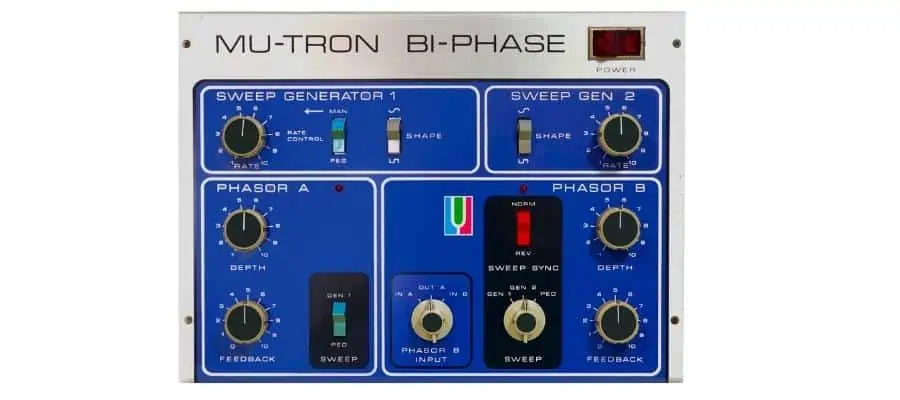
Mu-Tron Bi-Phase was the phase pedal used in the Siamese Dream record sessions. This became his primary phase pedal for years.
MXR Distortion+
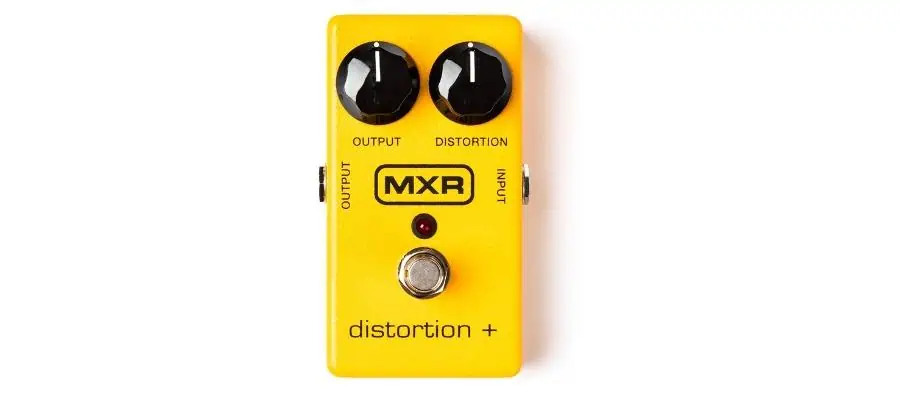
Billy was using the Big Muff with an MXR Distortion+ or II in the Mellon Collie era for extra drive.
MXR Phase 100
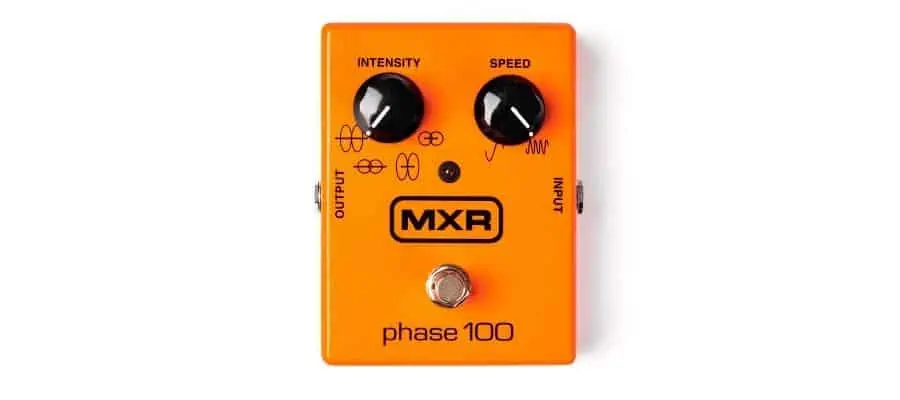
MXR Phase 100 replaced Phase 90 in the Mellon Collie era as the phase pedal of Corgan.
Electro-Harmonix Small Stone Phaser
Another phaser Corgan experimented with later was the Electro-Harmonix Small Stone Phaser, but he preferred to go with MXR Phase 100.
Electro-Harmonix Micro-Synth
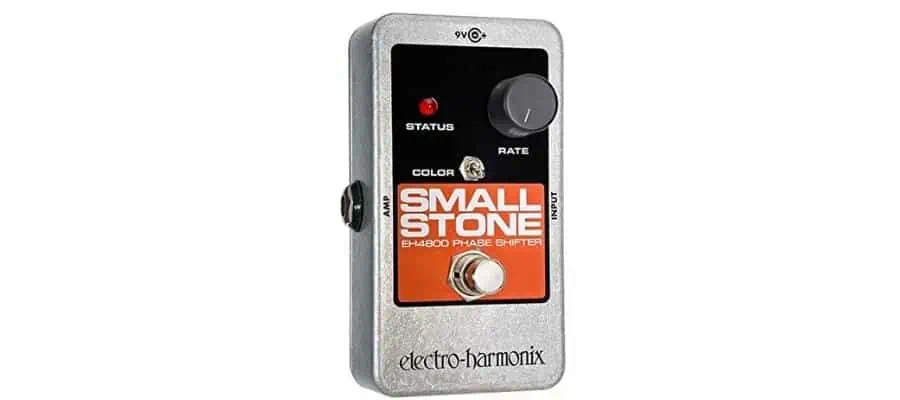
Another regular member of Corgan’s setup was the Electro-Harmonix Micro-Synth which he used for most live shows.
Alesis 3630 Compressor
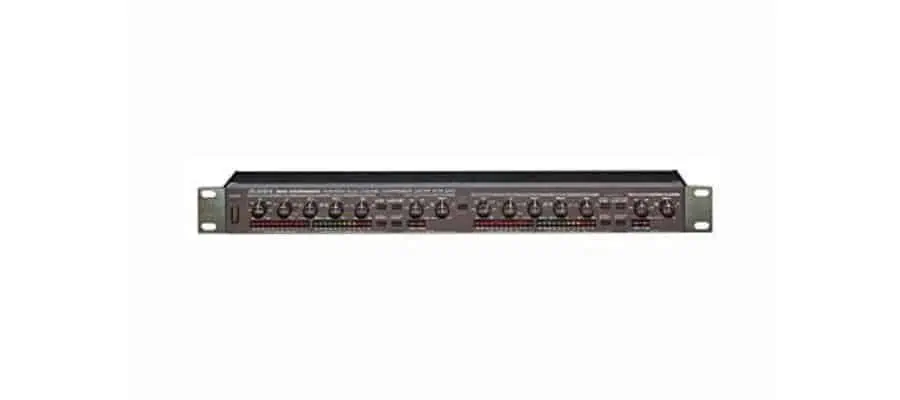
While Corgan used many compressor pedals throughout his career, his main pedal was the Alesis 3630 Compressor.
Boss FZ-2 Fuzz
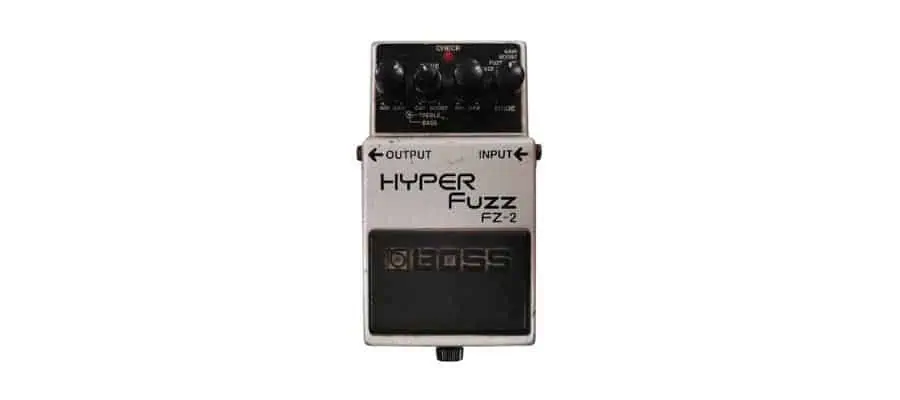
In the Mellon Collie era, Corgan used the help of fuzz pedals significantly in his tones. Boss FZ-2 Fuzz was one of the main pedals in his setup and tone.
Strymon El Capistan
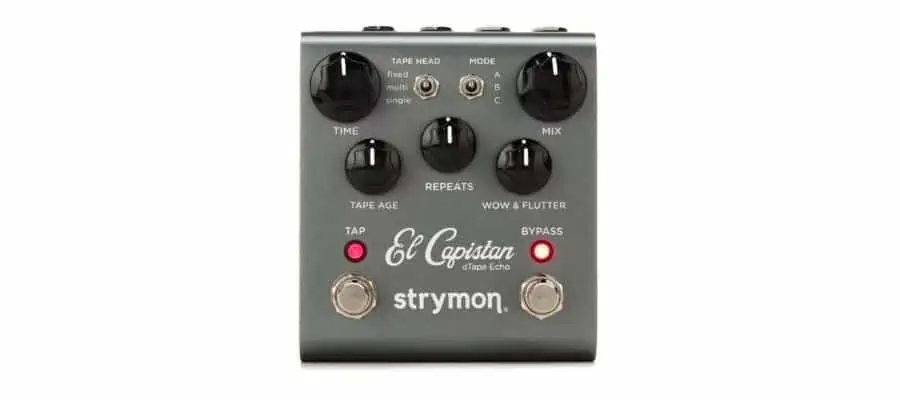
For the dealy parts, Billy Corgan’s choice was the Strymon El Capistan which gave him the 60’s tape delay he liked to use here and there.
Skreddy Echo
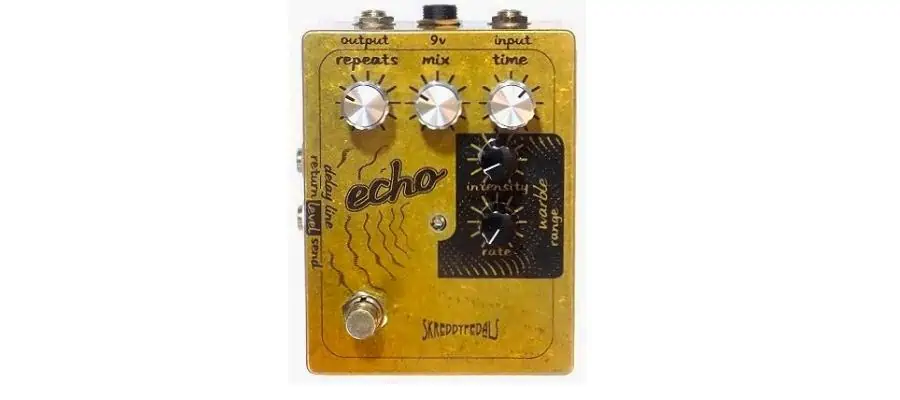
As Billy liked to get close to the iconic Pink Floyd sound, he used the Skreddy Echo in some songs to replicate the shimmering sound.
What Is Special About Billy Corgan’s Guitar Tone?
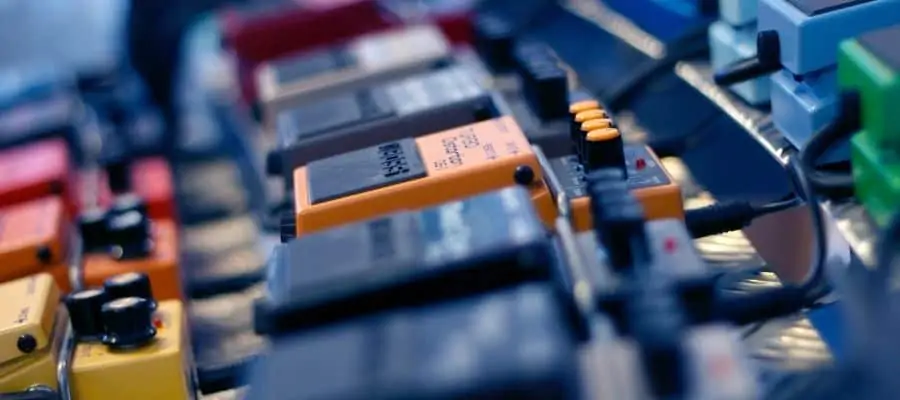
Billy Corgan was and is one of the most famous and unique guitarists in rock history. His way of approaching tones and forcing the limits of tonal possibilities is simply inspiring. His unparallel sonic vision made him experiment with much different gear, ultimately creating some of the iconic tones of history.
When talking about Billy Corgan and The Smashing Pumpkins, the first guitar tones that come to mind always feature heavy fuzz. The American alternative rock giants were mainly appreciated with their amazing guitar tones full of fuzz and layers of different effects. The super-thick layered fuzz tone of Corgan defined the band’s sound and the alternative rock scene for many years after the rise of The Smashing Pumpkins.
Another important aspect is the fact that Billy Corgan changes his main tone album-to-album. He is famous for his wide range of pedal setups, so he has the flexibility to build whatever tone he likes. And most of the unconventional mare tones push the limits further.
Billy Corgan uses Strats for their versatility as he likes to experiment with different tonal approaches. But he goes with lace sensor pickups as he does not like noisy and thin-sounding single coils. The lace sensor pickups allow him to have the versatility in using the high-gain tones without feedback.
So, what is special about Billy Corgan’s tone is his way of approaching alternative rock tonal possibilities. He basically uses a Stratocaster with DiMarzio lace sensor pickups and a Big Muff Pi pedal and runs it through a Marshall JCM 800 to get his main tone, but he layers it with phasers to make them fuller. He also adds many other pedals for coloring the tone a bit, but the main parts of the tone are always the fuzz pedal, tube amp, and Strat with lace sensor pickups combination.
How To Sound Like Billy Corgan
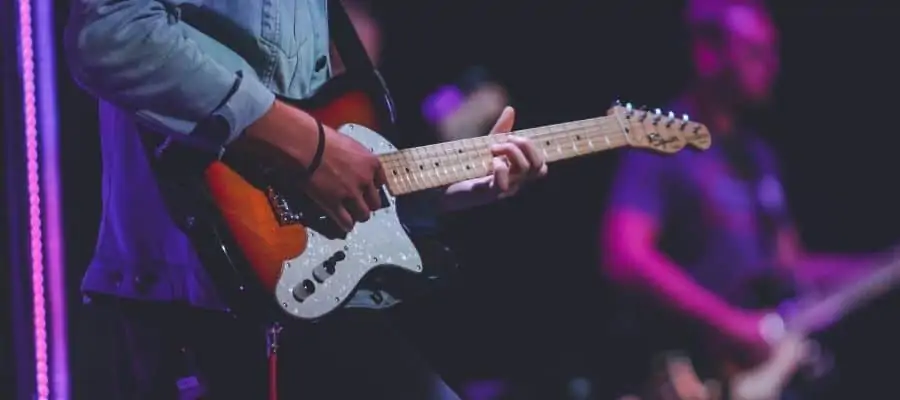
Guitar
In order to sound like Billy Corgan, the best is to use a Strat-style guitar with lace sensor pickups. This way, you can have a guitar that can handle high-gain tones when you want, while you can also use them for different tones.
You can go with any brand as Billy does. But the important thing here is to have the Strat flexibility combined with lace sensor DiMarzio pickups.
Amp / Amp Settings
Amp and amp settings are highly important to get Billy Corgan’s tone. He uses many different preamps to create his wall of sound. The main amps are the Salvation Mods. There are so many in his setup that he uses from time to time.
He also uses the Marshall JCM 800 with the Salvation Preamps, and this is the main amp I would say that gives the root color to his tone. The amp also can be seen in the I Am One video clip.
When recording Gish and Siamese Dream, Cogan uses Marshall amps and cabs mainly to get the crunchy-sounding distortion for the melodies. But his JCM 800 had KT88 tubes instead of the stock ones.
As Cogan uses fuzz-heavy tones, he gets low distortion from the amp giving way to the pedals. He cranks the master volume on the amp and experiments with the Preamp Volume to find the ideal tone.
Later they also used Marshall JMP1 Rack-Mounted Preamp and 9200 Power Amp in the Siamese Dream tour. He did not use the Big Muff as there were noise and feedback problems. He liked the sound and used an extra Mesa Boogie Strategy 500 Power Amp for the upcoming Mellon Collie and the Infinite Sadness albums. This way, he could get a super-saturated distortion tone that you hear on the songs such as Jellybelly and Bullet With Butterfly Wings.
So, in terms of amps, you will need a tube amp sound. As there will be a fuzz pedal on the menu, you will need only a low-distortion level from the amp so you can combine it well with the pedal. The EQ settings should be balanced with the bass on mid-levels, while the mids and the high-ends stay slightly higher than the half-point.
Pedal Effects / Pedal Settings
The Smashing Pumpkins sound is created with a very wide range of pedals, so it is not easy to get the exact sound, but it is easy to get close. While there are many pedals in the setup, the star of the show was always the Electro Harmonix Big Muff pedal. The main ingredient is the wall of fuzz in Corgan’s sound which defined the sound of the Siamese Dream era.
The late 70s V4 ‘Op Amp’ version was the exact pedal Corgan used. The 2017 version is also designed for Corgan, which can give you the Siamese Dream sound.
To get the super-thick and layered The Smashing Pumpkins sound Corgan and Iha were recording their parts 4 to 6 times instead of double-tracking them like most guitarists. So if you want to record with the Smashing Pumpkins tones, this is the best way to get there.
Billy Corgan also liked to use many modulation effects in different songs, especially the phaser. In the Siamese Dream, he used multiple phase pedals, such as the MuTron Bi-Phase and Electro Harmonix PolyPhase units, along with MXR Phase 90 (and 100), for the solo parts. The way he uses it is also unique as he turns the speed rate all the way down in order to have a subtle movement in the partitions. This gives the artificial doubling effect on the stage and in the studio. You can check the song Cherub Rock, especially the solo part, to hear the tone yourselves.
For the distortion effect, Corgan liked to use MXR Distortion pedals. He combines MXR Distortion and Big Muff to get highly-smooth high-gain tones with a more mid-range cut. In the songs Rocket and Hummer, you can hear the tone.
Techniques
In terms of his playing style, Billy Corgan is not as interesting and exciting as his unique tonal approaches. As an alternative rock guitarist, he does not use highly sophisticated techniques or anything difficult to play for most guitarists.
Billy Corgan likes to use grungy power chords combined with ambient dream pop arpeggios as well as heavy and fuzz-distortion-infused guitar riffs. He likes to stay around the major and minor pentatonic scales like heard in the songs such as Tonight, Tonight.
The choices of the scale of the band are quite simple as they often stick to major and natural minor scales. Most of his solos are in pentatonic scales, which is one of the most basic scales. He sometimes adds a b6th interval to get a more melancholy sound. He also uses lots of bends to play around with the scale.
Billy Corgan likes to use bends, legato, and slower melodic lines in his lead parts. His bends are his strongest point when playing, as he uses them often to give color to his solos.
He also likes to use octaves for their fat sounds. When you play a melodic riff, it is nice to create a contrast with an octave, like in the case of the song Cherub Rock.
Another technique Corgan uses often is the arpeggio technique. He likes to compose and play clean and ringing arpeggios, as you hear in the songs such as Tonight, Tonight, and Mayonaise. He likes to create an ambient tone with arpeggios. His way of playing arpeggios can be a bit tricky, so you will have to learn it well.
His general playing style is not anything difficult to replicate. Still, his composing skills are amazing as he can create an amazing ambiance along with his impressive skills of creating unique tones.
Billy Corgan Guitar Rig Examples
Budget
Guitar – Squier Affinity Stratocaster
- [7-Mode Effects]: Room, Hall, Church, Spring, Plate, Studio and Mod
- [Digital Circuit Design]: True bypass design delivers a transparent tone
- [Durable]: Whole Aluminium-alloy, Classic, stable and strong
- [Easy to Use]: LED indicator shows the working state
As Billy Corgan is a huge Stratocaster enthusiast, the best guitar to use is an affordable Stratocaster to get his tone. With a poplar body, maple neck, laurel fingerboard, and S-S-S pickup configuration, this guitar can get you close without spending much.
Amp – Positive Grid Spark
- Smart Jam learns your style and feel, generating authentic bass and drums...
- Access to 50,000+ amp-and-FX presets on ToneCloud, powered by...
- Import your music from Spotify, Apple Music or YouTube and Spark’s smart...
- Powerhouse 40 Watt combo includes onboard tone stack controls, effects,...
The cost-effective digital modeling amp Positive Grid Spark is the best cost-effective amp you can get to replicate as many tones as possible. Although it is not a tube amp, it digitally models tube amps quite successfully.
Pedals – Electro-Harmonix Big Muff Pi Fuzz Pedal and MXR Phase 90
- Singing sustain with attitude
- Crushing distortion
- Adjustable tone
- 9V battery included
- 9V Batteries Required, best with Polaroid 9V Batteries.
- Rich, warm analog tone
- Add shimmery velocity and dramatic swooshing to your tone
- The timeless phase shifter used on many classic recordings
If there is one pedal to use to get Billy Corgan’s tone, it is the Electro-Harmonix Big Muff Pi Fuzz Pedal. If you have some budget left after this one, you can also get an MXR Phase 90 to add some phaser effect to your tone for many of The Smashing Pumpkins songs.
Mid-Range
Guitar – Fender Player Stratocaster with DiMarzio DP226 BC2
- Alder Body with gloss finish
- Three player Series single-coil Stratocaster pickups
- Modern C"-Shaped neck profile
- 9. 5"-Radius Fingerboard
- Billy Corgan Bridge 2 BC White
- Product Name: bruit-4 drivers neodymium magnet céramique-puissance 315 MV
- Easy to use.
If you have a bit more to spend on an electric guitar, the Fender Player Stratocaster is a great choice. These guitars are made in Mexico and are pretty close to American-made Fenders in terms of performance, sound, and aesthetics.
Another important aspect here is the Signature-sound pickups for Billy’s signature guitar, DiMarzio DP226 BC2. This pickup in the bridge position will get you very close to that deep Pumpkin sound. You can use it in single-coil or humbucking mode, depending on the song.
Amp – Marshall ORI20C Origin 1×10″ 20-watt Tube Combo Amp
- 20 Watt all valve combo
- Switchable high, Medium, & low power output section
- Tilt control - blends bright & normal sounds
- 10 inch Celestion V type speaker
While Billy Corgan uses more than five preamps to get his tone, the main role is played by the Marshall “Soul” JCM800. So, you can get a Marshall ORI20C Origin 1×10″ 20-watt Tube Combo Amp to get close to that iconic vintage tube amp sound. This tube combo amp can get you close enough so you can color your tone with your pedal setup.
Pedals – Electro-Harmonix Big Muff Pi Fuzz Pedal and MXR Phase 90
- Singing sustain with attitude
- Crushing distortion
- Adjustable tone
- 9V battery included
- 9V Batteries Required, best with Polaroid 9V Batteries.
- Rich, warm analog tone
- Add shimmery velocity and dramatic swooshing to your tone
- The timeless phase shifter used on many classic recordings
The pedal setup once again is completed with the Electro-Harmonix Big Muff Pi Fuzz Pedal and MXR Phase 90. Most Pumpkins tones are created with these two or some versions of these two.
High-End
Guitar – Fender Billy Corgan Stratocaster
- Special Design Dimarzio Billy Corgan Single-Spaced Humbucking Neck and...
- A string-through hard-tail bridge enhances tuning stability during heavy...
- Its satin-finished neck with Jumbo frets feels super-fast and comfortable.
If you want to replicate the Billy Corgan sound and if you have enough budget for it, going with his signature model, Fender Billy Corgan Stratocaster, is the ideal choice. It has the custom DiMarzio pickups designed for Billy, which significantly helps get his versatile tone palette.
Amp – Marshall JCM800
- 100-watt 1-channel Tube Guitar Amplifier Head with 3-b EQ
- Series Effects Loop with True Bypass Switching
While Corgan uses many preamps on the stage, the main star in the studio and on the stage is the Marshall JCM800. You can also replace the stock 6550 tubes with more vintage-voiced KT88s to get even closer to his sound.
Pedals – Electro-Harmonix Big Muff Pi Fuzz Pedal – MXR Phase 90 – Alesis 3630 Compressor – MXR Distortion+ – Strymon El Capistan
- Singing sustain with attitude
- Crushing distortion
- Adjustable tone
- 9V battery included
- 9V Batteries Required, best with Polaroid 9V Batteries.
- Rich, warm analog tone
- Add shimmery velocity and dramatic swooshing to your tone
- The timeless phase shifter used on many classic recordings
- Two independent full-featured compressor/ limiters
- 3630 offers Ratio, Threshold, Attack and Decay controls to customize its...
- RMS and Peak compression styles, plus Hard and Soft Knee dynamic curves
- Two fully independent gates with threshold and rate controls
- Five tape adjustment and tone shaping knobs: Time, Mix, Tape Age, Repeats,...
- Ultra low noise, high performance 24-bit 96kHz A/D and D/A converters.
- 115dB typical signal to noise.
- Super high performance DSP in a compact form factor.
- Germanium-powered, soft-clipped distortion
- Classic 70s distortion
- Classic early ’80s hard rock tone
- Model Number: M104
In addition to the Electro-Harmonix Big Muff Pi Fuzz Pedal – MXR Phase 90 combination, which is the basis of Billy’s tones, Alesis 3630 compressor pedal, MXR Distortion+ for extra distortion, and Strymon El Capistan for delay parts can complete a great pedal setup to play with Corgan-style tones.
Conclusion
Billy Corgan is one of the most iconic guitarists when it comes to different tonal approaches. His unique way of creating different heavy-fuzz layered alternative rock tones is amazing, which led many guitarists to pursue his tones and his way of building tones.
So, examining his gear and understanding his way of building tones can help you significantly when building up your tone or basically replicating his tone for some of The Smashing Pumpkins’ covers or your own compositions.
If you found this article useful, you may want to save this pin below to your Guitar board.
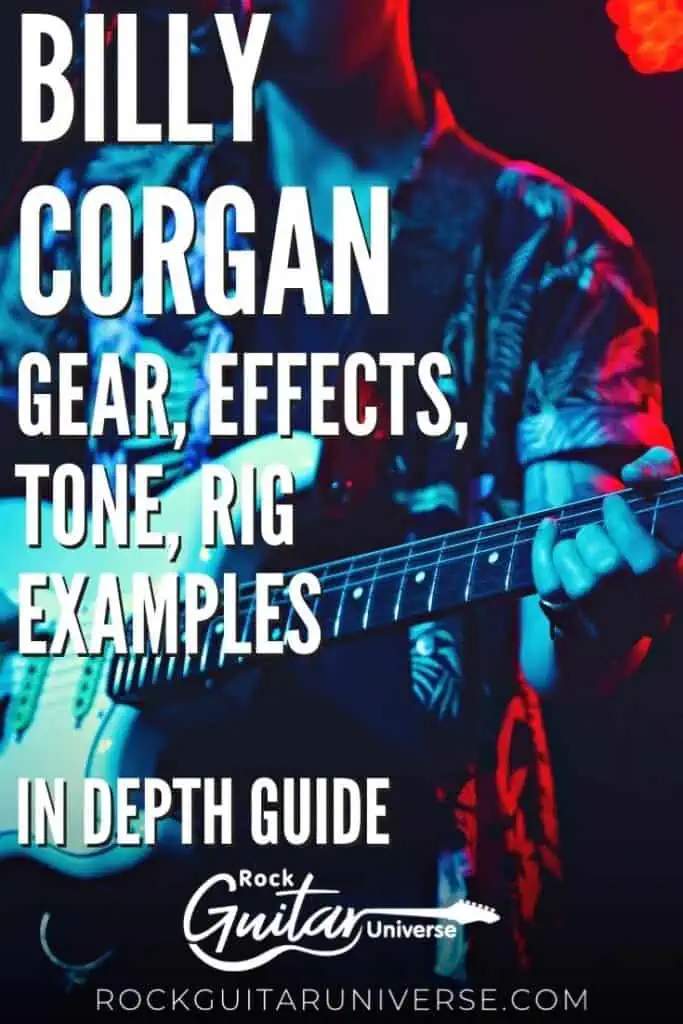
Last update on 2025-12-14 / Affiliate links / Images from Amazon Product Advertising API
Recent Posts
When learning new songs have you noticed that some of the chord sequences sound really good? But when you tried to come up with your own chord sequence, or as we call it chord progression, you found...
Some guitarists insist on buying an expensive amplifier with their electric guitar. They assume that this is a must for every type of guitarist out there. However, in some situations, this isn’t...

